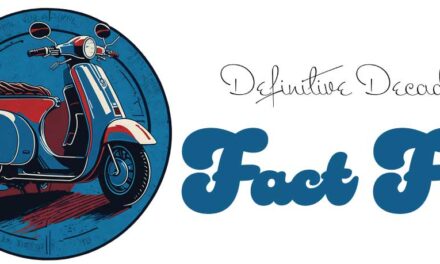“Hellraiser”: The Birth of a Gruesome Horror Masterpiece
Released in 1987, “Hellraiser” is a cult horror film that embraced the grotesque and the macabre, solidifying its place in the genre’s cannon. Directed by Clive Barker, the movie blends elements of supernatural horror, along with sadomasochism and a striking visual aesthetic. At its core, “Hellraiser” explores themes of desire, pain, and the blurred boundaries between pleasure and torment.
Clive Barker, known for his distinct, boundary-pushing style, both as a filmmaker and a writer, adapted “Hellraiser” from his novella, “The Hellbound Heart.” The British filmmaker skillfully crafted a narrative full of grotesque imagery set against a backdrop of dark desire.
The film was produced by New World Pictures, a production studio specializing in low-budget and genre films, with a reputation for bringing unique and daring projects to life. “Hellraiser” was shot on a limited budget, yet Barker’s visionary direction allowed him to create a truly terrifying and visually stunning experience.
The plot revolves around the main character, Kirsty Cotton (played by Ashley Laurence), who inadvertently summons a group of demonic creatures known as the Cenobites. These beings, led by the iconic Pinhead (played by Doug Bradley), are sadomasochistic explorers of pain, who exist in an alternate dimension. As Kirsty desperately attempts to save her father from the clutches of the Cenobites, she becomes entwined in a web of pleasure and pain, as the lines between the two become blurred.
The casting choices made for “Hellraiser” were pivotal in creating memorable and terrifying characters. Ashley Laurence delivers a compelling performance as Kirsty, capturing her vulnerability and determination as she faces increasingly gruesome challenges. Doug Bradley’s portrayal of Pinhead is truly haunting, as he brings a cold, sinister presence to the screen.
Upon its release, “Hellraiser” received mixed reviews from critics. Some praised Barker’s daring and imaginative storytelling, while others were repulsed by the film’s graphic violence and disturbing imagery. However, the movie found a passionate audience who appreciated its boundary-pushing nature and its ability to leave a lasting impression.
Despite its modest budget, “Hellraiser” achieved commercial success, earning over $14 million at the box office. Its impact was felt beyond financial success, as the movie became a pillar of cult horror cinema, influencing future films and inspiring a dedicated following. The movie also received praise for its groundbreaking special effects, which added an extra layer of horror and morbidity to the visual aesthetic.
Due to its popularity, “Hellraiser” spawned a franchise that includes multiple sequels, prequels, and related media. While not all of the subsequent films reached the same critical acclaim as the original, they expanded on the terrifying world created by Barker and allowed fans to explore the mythology and intricacies of the Cenobites’ alternate dimension.
Furthermore, “Hellraiser” has left an indelible mark on popular culture. The character of Pinhead has become an iconic figure in horror, spinning off countless memes, parodies, and Halloween costumes. The film’s influence also extends to other media, such as video games, comic books, and merchandise.
In conclusion, “Hellraiser” stands as a testament to Clive Barker’s unique talent for crafting visceral horror and pushing boundaries. Its blending of sadomasochism, supernatural horror, and stunning visual effects make it a must-watch for fans of the genre. Although initially met with mixed reviews, the film’s lasting legacy and the devotion of its fan base highlight its enduring impact on horror cinema.












